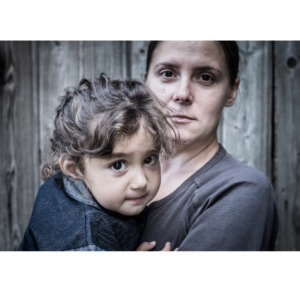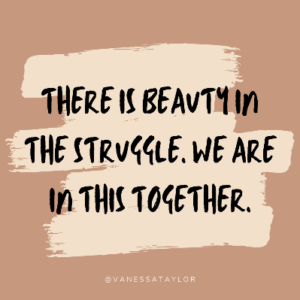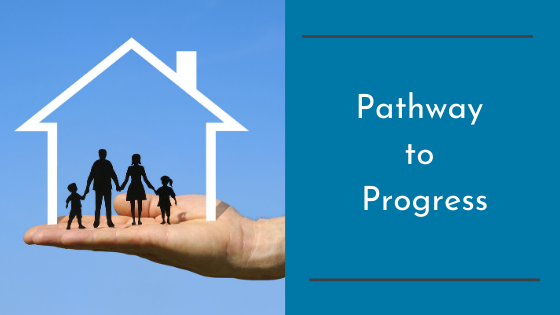Pathway to Progress
This week’s blog is written by Jessica McKinney, Executive Assistant, Upstate Family Resource Center
In 2020, Upstate Family Resource Center (UFRC) received $15,000 in general operating support to provide safety net services that help families overcome crisis and stabilize financially. This blog will highlight just some of the work UFRC has been doing in the unprecedented year that is 2020 to help families in Spartanburg County thrive.
Meet Margaret
Four years ago, life wasn’t terrible for Margaret–it wasn’t great but she was taking care of herself. She was a working single mother of a teenager and just making ends meet. She recently had escaped a domestic violence situation, and was surviving.
But.
Then the bottom dropped out.
First, she had a stroke. This affected her ability to drive, so she soon lost her job. Subsequently, she filed for disability assistance. Unfortunately, in Margaret’s 50+ years, she did not work much so her disability payments are less than $800 each month.
To put that into perspective, Margaret should be making about $1,666 each month to simply cover her basic needs. $1,666 would only cover her housing, transportation and food costs. Margaret is receiving less than 50% of the income she needs to be self-sufficient.
During this time, Margaret’s 18-year-old daughter becomes pregnant. When her grandchild is born, is became apparent that her daughter was using illicit substances. Margaret filed for custody of her grandchild, which was granted. Soon after, Margaret’s daughter left the area.
 Now, raising her grandchild, Margaret’s cost of living increased. For her to live self-sufficient in our area, she would need to receive at least $2,200 to pay for a sufficient place to live, increased food cost, transportation, etc. *Please note, these self-sufficiency calculations do not allow for extras– birthday/Christmas presents, car repairs, etc.
Now, raising her grandchild, Margaret’s cost of living increased. For her to live self-sufficient in our area, she would need to receive at least $2,200 to pay for a sufficient place to live, increased food cost, transportation, etc. *Please note, these self-sufficiency calculations do not allow for extras– birthday/Christmas presents, car repairs, etc.
Shortly after Margaret’s stroke, she received a cancer diagnosis. Additionally, Margaret’s granddaughter is showing signs of a disability. Margaret is walking to and from the grocery store for food—all the while, pushing her 3-year-old granddaughter in a stroller, since she can’t walk.
This sounds overwhelming- doesn’t it? I can assure you, that while I changed Margaret’s name-she is a real person and this is her life.
So, how can we help raise Margaret to a level of financial stability and self-sufficiency? Margaret, like many clients we see have many barriers. Sure. We can tell her to find a job, hand her a bag of food and tell her “good day.” But what would that do? How would Margaret find that job? How does she get there? And what about her 3-year-old grandchild? She can’t walk to Downtown Spartanburg or Lyman, where services are to help connect her to employment. So, she calls for the medical bus. But due to the high volume of clients using this service–she waits for the bus and misses her appointment.
So Margaret gives up. Other than her frustration, what is her incentive to continue the process to gain employment?
Pathway to Progress
Thanks to the partnership with United Way of the Piedmont, Upstate Family Resource Center has been a part of a team of nonprofits working with Dr. Billy Edwards from Clemson University to address behavioral change. Together, we have come up with a plan called Pathway to Progress.
 Pathway to Progress (P2P) is a look at human behavior and what drives humans to make a change in their lives. This program also looks at UFRC, the assistance agency, and how we can aid a client in making that change. Our team sat down and laid out the WHAT, HOW, and WHY of client engagement. We completely understand that there will be individuals who simply- because of age, disability, legal status, etc.- cannot make a significant change to bring their standard of living to being self-sufficient.
Pathway to Progress (P2P) is a look at human behavior and what drives humans to make a change in their lives. This program also looks at UFRC, the assistance agency, and how we can aid a client in making that change. Our team sat down and laid out the WHAT, HOW, and WHY of client engagement. We completely understand that there will be individuals who simply- because of age, disability, legal status, etc.- cannot make a significant change to bring their standard of living to being self-sufficient.
So in response to this, we have developed a system that will aide us in providing more efficient–more targeted assistance. Clients who would like us to join them on their Path to Progress will receive a case manager who will be their personal cheerleader. Together, they will set goals–based on what the client wants to work toward. Each baby-step will be logged and when one is completed, we will have the ability to provide incentives.
Leading clients like Margaret on a path to progress, will take time. We all know Rome wasn’t built in a day and no one can expect clients to make leaps and bounds in a week–or month even.
UFRC looks forward to sharing more about Pathway to Progress in the near future. This program will not fully kick off until January 2021, but if you are reading this and would like to know more– email Jessica McKinney at jessica.mckinney@spart2.org.

